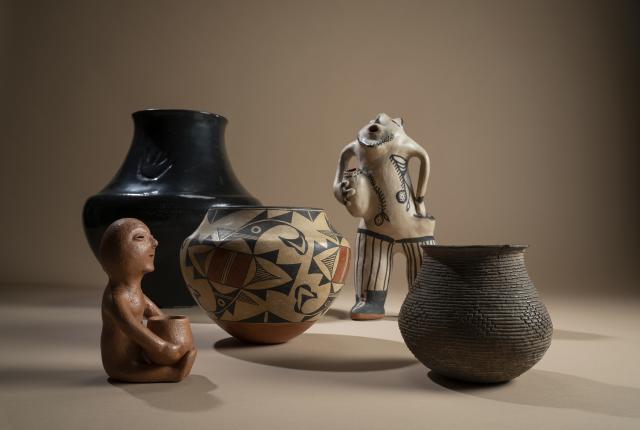I CAN'T SAY that before moving to New Mexico I had ever purchased a piece of art—unless you count what can be found at Ikea. But in just a short time here, my wife and I have bought enough pottery, paintings, and kachina dolls that we’ve started wondering where to put it all in our tiny apartment.
Most of what we’ve collected has come from estate sales on half-price Saturdays. Usually we split up, scout for what each of us likes, then agree on a piece or two here, a piece there. Almost as a rule, we don’t look up artists’ names or other information until we get home. The idea is that we buy what attracts us, not what some auction site says. Then we learn more about the artist and their work.
I can’t fully explain why we’ve suddenly become art buyers after all these years. Some of it likely has to do with not having young kids around the house and needing to do something with the stark white walls of our dwelling. But I also believe much of it can be tied to New Mexico itself, and the almost intrinsic bond between art, culture, and life here.
Those links grow strikingly apparent in our “Breaking the Mold” cover story on the unprecedented Pueblo pottery exhibit organized by the School for Advanced Research’s Indian Arts Research Center, the Museum of Indian Arts & Culture, and the New York–based Vilcek Foundation. Hearing from Pueblo people on their connections to these works and the meaning behind them is profound.
“Many journeys are embedded in the clay by those who created the vessels,” writes potter and seamstress Evone “Snowflake” Martinez (San Ildefonso, Cochiti) about a circa-1915 canteen crafted by Maria Poveka Martinez and Julian Martinez (San Ildefonso). “When a pot is shaped, it is given life and carries the memories of its maker’s life stories and songs. If you listen carefully, you may hear one of these stories.”
I’m excited about seeing the exhibition, and that August brings the centennial celeb-rations of both the Gallup Intertribal Ceremonial and Santa Fe Indian Market (after the 70th annual Traditional Spanish Market at the end of July). Each one is a way to hear directly from artists, view their work, and connect with the spirit of this place.
And while I’m not sure I’ve yet been gifted one of those stories, I’ll keep listening.


